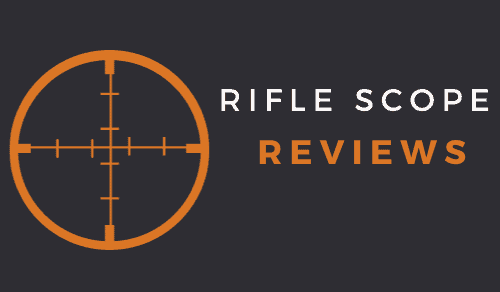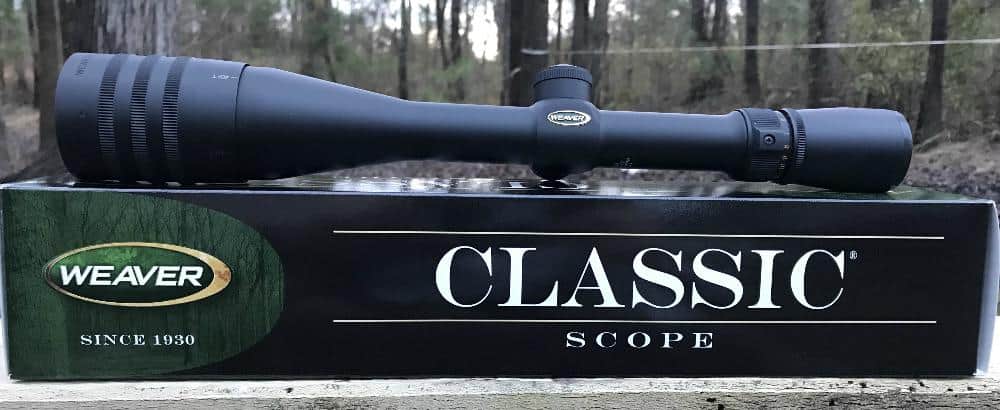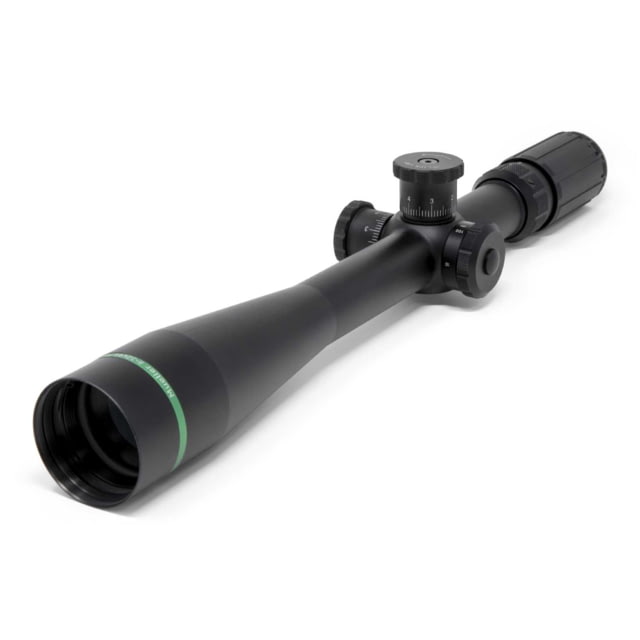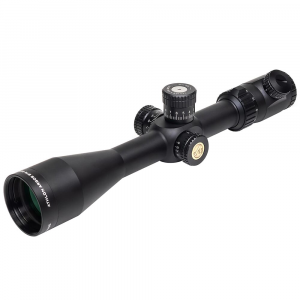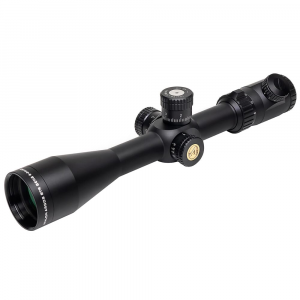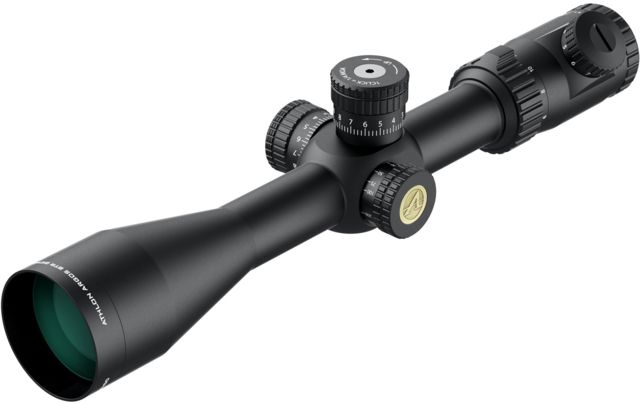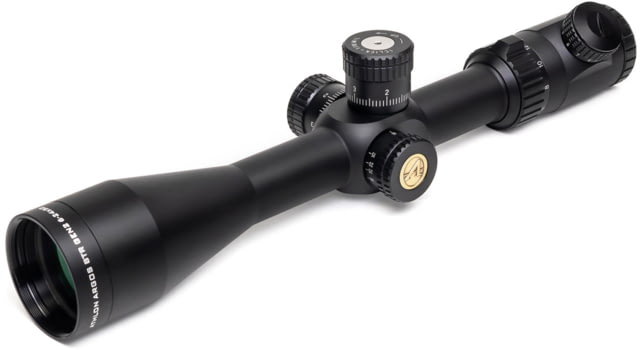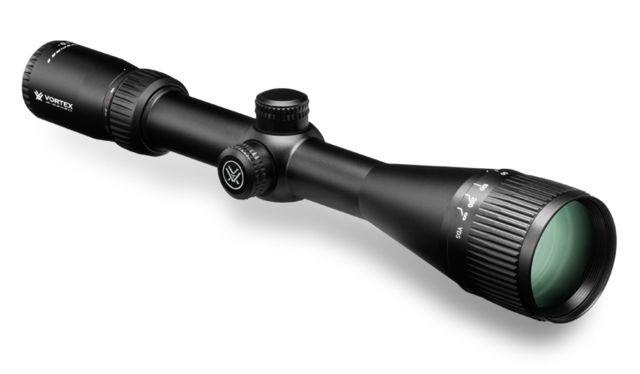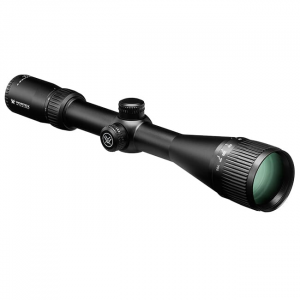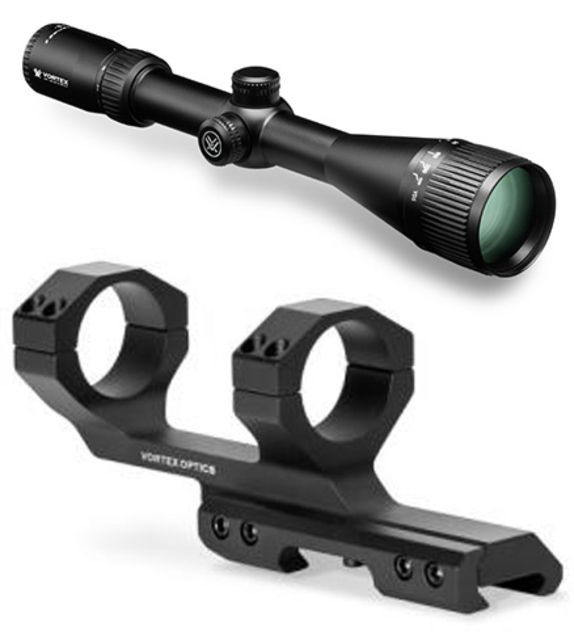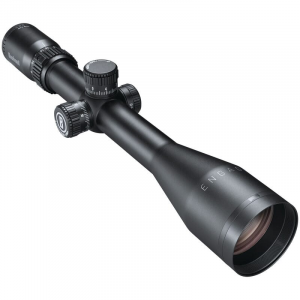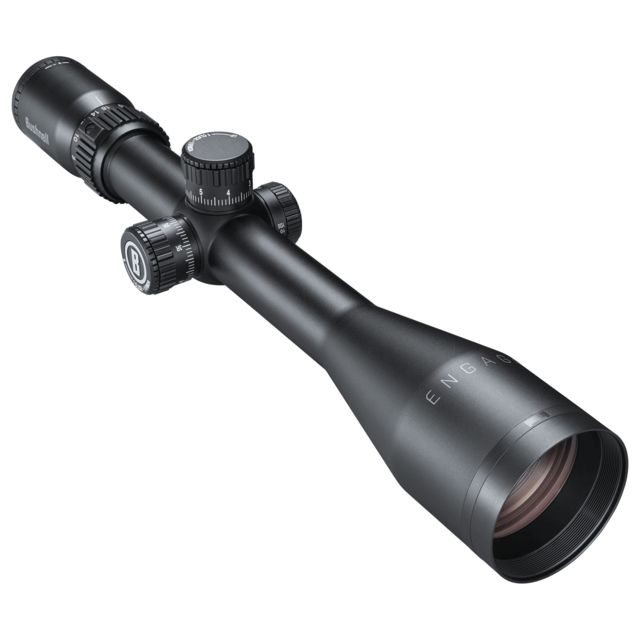As an Amazon Associate I earn from qualifying purchases. Amazon and the Amazon logo are trademarks of Amazon.com, Inc, or its affiliates.
During my days working at the gun counter (for a large sporting goods chain that shall go un-named), one of the most common questions I was asked had to do with people who were just getting into long-range rifle shooting and wanted information about the best cheap long range scope on the market?
Now, before I delve into the answer to that question, it’s important to define exactly what they mean by long range. Let’s face it, one person’s definition of “long range” may not be the same as another, especially if you’re asking a seasoned long-range rifle shooter.
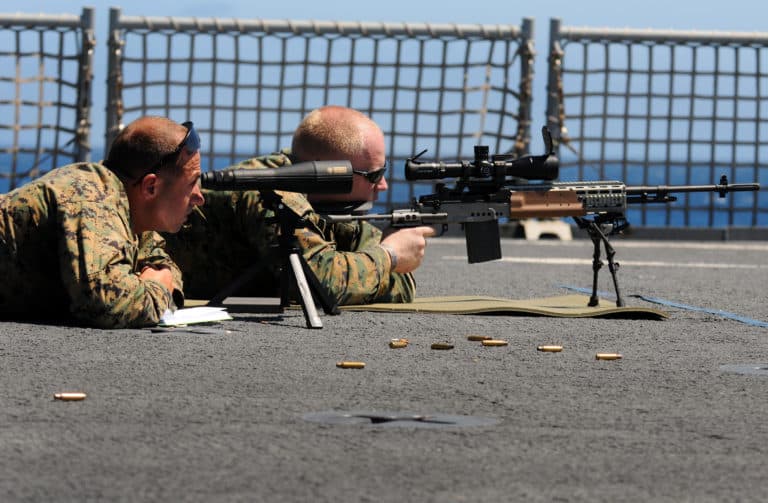
Most people define “long range” as shots that are over 500 yards. Shots in the 200-500 yard distance are commonly called “mid-range” shots. However, with shooters, most associate the “long range” term with shots in the 800 – 1000 yard distance. So, for the sake of this article, let’s say long range means shots in the 800 to 1000-yard distance. Now, these shots could be taken from a bench or from the field in a hunting scenario.
Now, let’s take a stab at addressing the word “cheap”. I don’t think a dollar value can be assigned to “cheap,” so for the sake of this article, let’s assume that “cheap” means as little as possible. Riflescopes designed for long range shooting typically are not inexpensive, so let’s say that a “cheap” one means an entry-level long range scope that costs less than $500. Most “good” long-distance scopes cost in excess of $1000, and the really good long range scope models come in at $2000+.
Before I actually get into suggesting and reviewing rifle scope models that potentially answer the original scope question, it’s important to discuss a few other points that should play a role in your scope selection process:
Optical Clarity
This term refers to the optical clarity of the glass used in the scope. For the most part, better quality glass equals better optical clarity. And better quality glass usually comes at a higher price. My advice on glass clarity is to buy the highest quality glass that you can afford, even if it means sacrificing the magnification power.
For example, if you have two scopes that are exactly the same price, and scope A is a 6-20 powered model with decent glass but scope B is a 4-16 powered model with better quality glass; I’d suggest buying scope B because higher magnification is useless if you can’t make out the target details due to the lower glass quality.
The only caveat I’d add to that advice would be if you were absolutely brand new to long-distance shooting and were still trying to determine if it was a shooting sport you were interested in delving into. If you were outfitting yourself as a brand new shooter that was “testing the waters” in long range shooting, then maybe it makes sense to spend as little as possible on gear until you decide if you want to pursue the sport deeper. However, if you are definitely into long range shooting, then my buy the best glass you can afford advice stands.
Power Magnification
When you see power ranges associated with rifle scopes (and spotting scopes), the power numbers are a magnification of the average naked eye with 20/20 vision. So a 4-powered scope means that the 4X power equals 4 times the magnification of the naked eye. A 10X scope is 10 times the power of the naked eye, and so on.
Many new shooters shopping for a long range rifle scope get overly focused on the higher power ranges commonly associated with long range shooting. While higher power magnification ranges are a nice option to have, they are NOT a necessity for long-range shooting.
I’ve seen shooters with military sniper training absolutely crush targets and steel at ranges over 1000 yards using nothing more than a fixed 10-power scope. Anything above the 10 power range is a potential candidate for most long range shooting.
Reticle Options
In my humble opinion, the reticle is a more important choice than the power range for long range shooting. The reticle will help determine the range and holdover values, so it’s a vital component of the long distance shooting game.
Personally, I prefer ranging reticles like mil-dots or mil-hashes as I find them easier to use to compute and adjust hold-over values. While you certainly can try to shoot long distances with a standard duplex, I wouldn’t recommend it, as there are far better reticle choices on the market today.
Another reticle option to consider is an illuminated reticle. Personally, I like an illuminated reticle, but it comes at the cost of added weight and potential component failure.
Zero Reset
Zero reset refers to a scope with the ability to reset the scope to the original zero without having to re-shoot for zero. While you don’t absolutely have to have a scope with zero reset for shooting longer distances, it’s certainly a plus.
If you shoot with a ranging reticle, you can usually avoid having to reset the zero as you just adjust the hold-over based on hold-over computations. However, if you bottom out the reticle’s ranging features, then you either have to extend the distance used for zero and re-zero or upgrade to a scope with a resetable zero (also commonly called a zero stop).
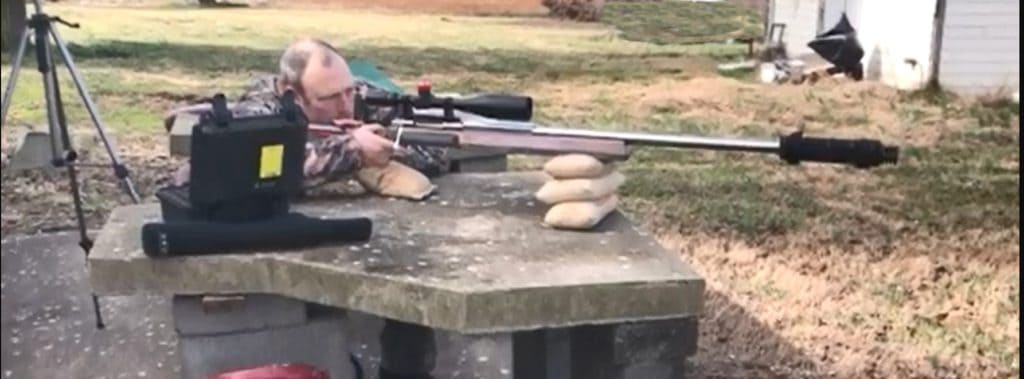
Eye Relief
This term describes the distance (usually measured in inches) from the scope to your eye. I’d look for something in the 3.5″ to 4″ range at a minimum. Typically, the longer the eye relief, the better for two reasons:
(1) If you are too close to the scope and shooting a rifle with substantial recoil, the scope may come and strike your face during the shooting process. This is commonly called “scope bite” or “scope rash”. It’s unpleasant and painful, so decent eye relief is important.
(2) For me, longer eye relief is less strain on the neck as I can shoot from a more natural position.
Recommended Long Range Scopes Overview
The list below includes what I consider to be the least expensive long range scope options currently on the market. As new models come up and are evaluated, I’ll be updating the information accordingly.
Mueller Tactical 8-32X44 Rifle Scope with Mil-Dot Reticle
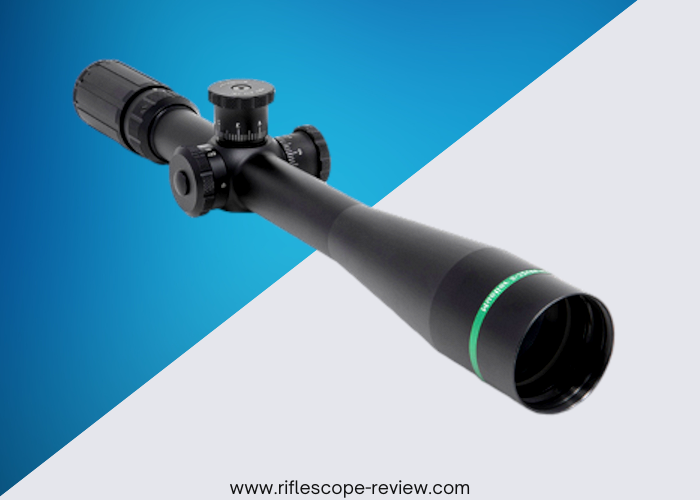
The 8-32 power range is more than enough for almost any long range shooting application, and the scope has enough features to make it work for both long range and shorter-range work. The side focus that goes all the way down to 10 yards is especially handy in situations where you may be shooting both long range targets and targets that are closer than 50 yards. This type of functionality isn’t common on long range scopes and also makes the Mueller scope a candidate for other types of shooting scenarios like varmint hunting or benchrest competition.
Specs:
- Multi-coated optics
- 30mm tube
- Field Of View: 9.3 feet (8×) – 2.5 feet (32×) at 100 yards
- Side Focus parallax adjustment: 10 yards – infinity
- Exit Pupil: 5.5mm (8×) – 1.37mm (32×)
- 1/8 M.O.A. fully exposed (target-style) windage and elevation adjustments
- Dry-nitrogen filled; 100% water-proof/fog-proof, shock-proof construction
- Eye Relief 4.0″
- Length 16.25″
- Weight 26.0 oz.
- Magnification 8 – 32 × power
- Objective 44 mm
Here are a few things that I liked and disliked about this particular Mueller optic:
Pros
- Higher magnification range (8-32).
- Decent glass (based on its price point).
- Holds zero in testing and use.
- Comes in a Mil-Dot reticle.
Cons
- Limited warranty (compared to competitors).
- No Zero reset (expected at this price point).
- The eye relief is under 3.5″.
- At 16.25″, it’s a long scope.
If this Mueller scope interests you, here are some for sale:
Athlon Argos BTR 6-24X50
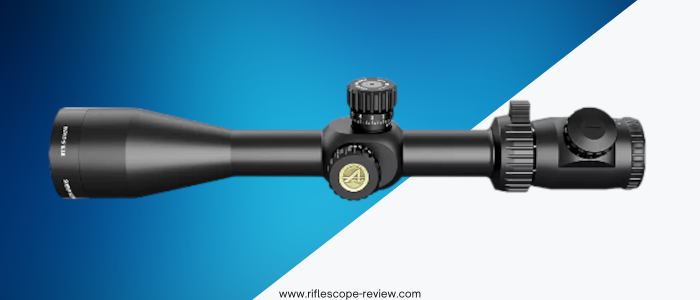
Manufactured by Athlon Optics, the Argos BTR is slightly different from most of the other long range scope models on this list as it’s a First Focal Plane (FFP) model versus a Second Focal Plane (SFP). The biggest difference between the two planes is reticle size.
With a second focal plane scope, the reticle is the same size throughout the power range, and this is how most hunting rifle scope models are configured. With a first focal plane model, the reticle changes sizes as the power is magnified, making the reticle the largest at the higher powers and smaller at the lower powers.
First focal plane (FFP) models have become popular with long-range shooters because the holdover or MOA remains the same throughout the power range, where it changes through the power range with a second focal plane model.
If you wanted to dip your toe in the FFP water without spending an arm and a leg, then the Argos BTR would potentially be a good place to start. It’s a great choice for someone who wants to try the FFP experience before really diving in with some really high-end FFP glass.
Although the BTR series is manufactured for Athlon in China, the glass clarity and quality are good for an FFP model in this price range. Truth be told, I’m not really a big fan of Chinese-made glass, but the BTR did surprise me in clarity.
The BTR model in 6-24-X50 is currently available in two reticle options: an MOA and MIL variants. I’ve tried both and prefer the illuminated MOA version personally. The non-illuminated MOA reticle is very long-range friendly but, IMHO, seems to kind of disappear in the woods for hunting.
Even when shooting in bright open spaces (like for Prairie Dogs), the non-illuminated reticle would get lost for me in shadows or heavy grass. Now the illuminated reticle version was a different story, but you do pick up a few more ounces in weight with the illuminated models versus the non-illuminated models.
The Athlon BTR may be one of the few FFP scopes that you see on a review of the top options for inexpensive long range scopes.
Specs:
- Wide Band Fully Multicoated
- 30mm tube
- Reticle: ATMR FFP IR MOA, Glass Etched
- Side Focus – 10 yards to infinity
- Field Of View: 16.7-4.5 feet
- Exit Pupil: 8.2-2.1 mm
- Exposed turrets with 0.25 MOA windage and elevation adjustments
- Eye Relief 3.3″
- Length 14.1″
- Weight 29.6 oz.
- Magnification 6 – 24 × power
- Objective 50 mm
Pros
- First Focal Plane (FFP).
- More than adequate magnification range (6-24).
- Good glass for the $$.
- Comes in MOA and MIL based reticles (along with illuminated versions of both as well).
- Etched reticle versus wire.
Cons
- At 29.6 ounces in weight, it’s a bit on the heavy side.
- While I did not struggle with the eye relief, the factory specs at 3.3 inches are a little short for higher calibers with more recoil.
- Kind of mushy and soft turrets. Not a deal-breaker, but worth mentioning.
- Doesn’t come with a sunshade. Those have to be purchased separately. ????
Vortex Crossfire II 6-24X50
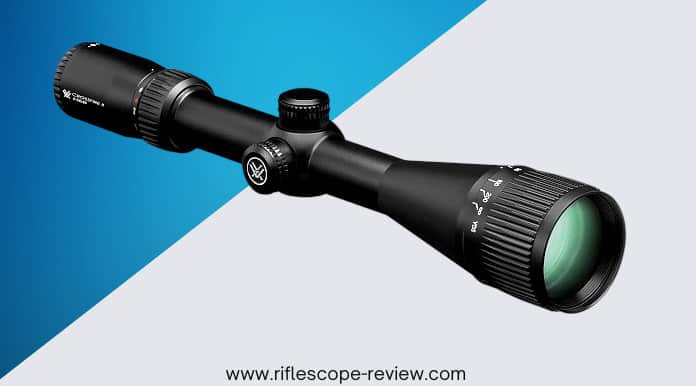
While some might argue that the BDC reticle is really designed more as a hunting application, I’ve had good success with it for long range shooting. The trick is to research the specific BDC data for this specific scope and then match that data to the specific caliber that you are shooting. If you don’t fancy the BDC reticle, this model is also available with an MOA V-Plex reticle.
Given the entry-level prices on the Crossfire II series, it’s no surprise to learn that Vortex Optics has them manufactured in China (although some of their more higher-end lines are made elsewhere).
The optical quality of the glass on the Crossfire II series is about what you’d expect for a scope of this power in this price range. It’s not what I would call “bad”, but it’s not great, either. However, this model is definitely a viable candidate if you are on a sub $350 budget. Keep in mind that Vortex also produces some very high-end rifle scopes that most certainly won’t qualify as “cheap” for most people!
Specs:
- Multicoated Lenses
- 30mm tube
- Reticle: BDC
- 10 yards to infinity focus located in the Objective Bell
- Field Of View: 17.3-4.4 ft at /100 yds
- Exit Pupil: 8.2-2.1 mm
- Capped turrets with 0.25 MOA windage and elevation adjustments
- Eye Relief 4.0″
- Length 14.5″
- Weight 23.6 oz.
- Magnification 6 – 24 × power
- Objective 50 mm
Pros
- Has excellent eye relief with factory specs of 4 inches, making it a potential candidate for higher caliber rifles.
- Good magnification range (6-24).
- Focuses down to 10 yards, so it’s versatile enough for target and hunting use.
- Comes with a factory sunshade and lens covers.
- Held zero well for a budget model.
Cons
- The optical quality of the glass is decent but not great. Some haze and flare at the higher power ranges.
- Sensitive eye relief – While the overall eye relief length is good, I did notice that the eye relief was somewhat unforgiving with any side-to-side head movement.
- No side focus. The focus is located on the bell, which isn’t a deal-breaker, but I personally prefer side focus.
Sightron S-TAC 4-20X50 with MOA-2 Reticle
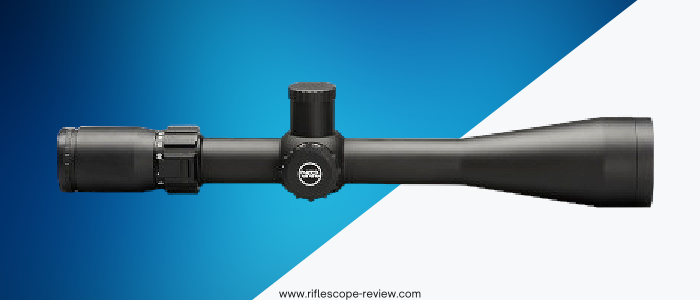
Sightron is also another popular scope brand in the long range game, but the majority of their optic models are going to be priced out of the “cheap” category. However, there are exceptions, and the Sightron S-TAC 4-20X50 with the MOA-2 reticle is one of those exceptions for a highly ranked budget oriented long range scope.
The S-TAC series was introduced by Sightron as a replacement for their popular SII Big Sky series of scopes. The S-TAC series was really designed to be a cross-over series that would potentially work for tactical, long range, and hunting applications. In truth, the Sightron SIII series of scopes are really better suited for long-distance shooting, but they won’t be priced in the same price ranges.
Currently, the 4-20X50 model has the highest magnification power in the S-TAC series and is more than enough for most long-distance shooting applications. Built on a 30mm tube, the glass on the S-TAC isn’t quite as good as the glass used on the SIII line of Sightron scopes, but better than the glass used on the SII series of scopes.
Although Sightron has a glass scope facility in Japan, they build the S-TAC series in the Philippines. The glass is better than expected and more than suitable for long-range applications. The real key to the S-TAC is Sightron’s patented MOA-2 reticle. This reticle is really ideal for long range shooting as it combines a small dot reticle with mil-hashes for long-distance ranging capabilities.
Personally, I’m a fan of this S-TAC model as I have two mounted on different rifles.
Specs:
- Multicoated Lenses (Sightron’s Zact-7 TM 7-Layer)
- 30mm tube
- Reticle: MOA-2
- Side focus – 12 yards to infinity
- Field Of View: 23.6-4.4 at 100 yards
- Capped turrets with 0.25 MOA windage and elevation adjustments
- Eye Relief 3.7 – 4.0″
- Length 14.8″
- Weight 23.8 oz.
- Magnification 4 – 20
- Objective 50 mm
Pros
- While opinions may vary, I find the glass quality to be very good for the $.
- Side focus that goes all the down to 10 yards, so it’s versatile enough for target and hunting use.
- Great reticle for long range shooting (IMHO).
- Very good eye relief.
- Consistently holds zero.
- Good factory warranty.
Cons
- While the reticle is great for long range, it’s not great for any low-light hunting scenarios.
- The small dot nearly disappears in low light.
- Doesn’t come with a sunshade. It has to be purchased separately.
- While the 4-20 power range will work for long-range shooting, it’s a bit on the lower side of typical long range magnification specs.
- The scope adjustments are very aggressive and take some getting used to.
Bushnell Engage 6-24X50 with the Deploy MOA Reticle
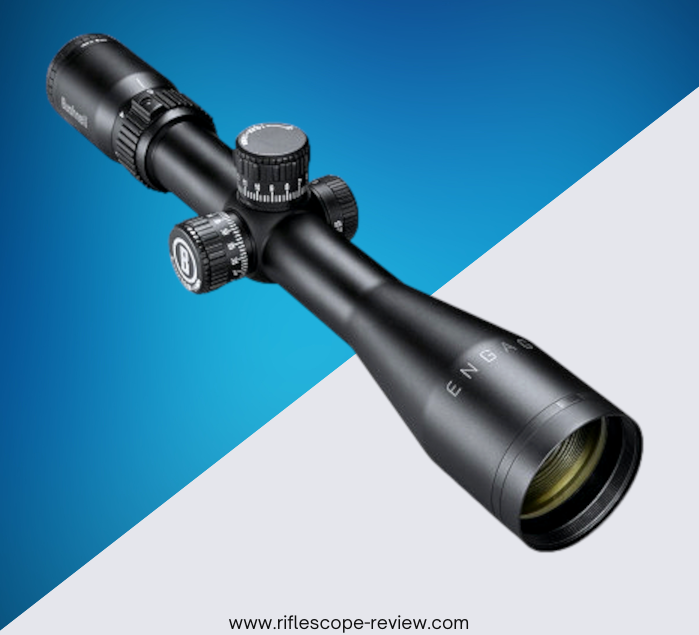
Bushnell Optics offers a very broad line of rifle scopes and sports optics, so they have a scope option to fit nearly any budget. The Engage series is Bushnell’s more budget-friendly entry into the 30mm tube long range shooting world. Bushnell has other, less expensive lines that would work for long-range work as well, but I’ve found the Engage models to be the best option for less than $500.
Although the Engage series is built in China (again, I’m not really a fan of Chinese-made optical glass), the glass was/is pleasantly surprising from a clarity and brightness standpoint.
Now is the glass on the Engage series as good or comparable to the glass on the higher-end Bushnell Elite series (which is Bushnell’s current flagship line of glass)? No, it’s not, but since the Elite models cost almost twice as much, you wouldn’t expect the glass to be comparable.
I found that Bushnell’s patented Deploy MOA worked well for longer range shooting, and the MOA hash reticle was simple to use. I will say that the Deploy MOA reticle has fairly thin and faint reticle lines, and I found them a bit hard to see in lower light.
The operational controls on the Engage are well thought out and well-marked but are a bit mushy with some minimal play in them. While the exposed turrets are lockable, this model (and most of the models reviewed on this page) does not come equipped with a zero stop.
Specs:
- Multicoated Lenses
- 30mm tube
- Reticle: Deploy MOA
- Side focus – 10 yards to infinity
- Field Of View: 18ft @ 6X to 4ft @ 24Xat 100 yards
- Exposed locking turrets with 0.25 MOA windage and elevation adjustments
- Eye Relief 3.6in / 91.4mm
- Length 14.2″
- Weight 23.7 oz.
- Magnification 6 – 24
- Objective 50 mm
No optic is perfect, so here are a few features I liked and didn’t like with this model of the Engage scope series:
Pros
- Comes with a very good warranty that Bushnell supports well.
- At 14.2 inches, this model is more compact than most.
- Good (not great) reticle for long range shooting.
- Very good eye relief.
- Consistently held zero.
Cons
- While the reticle worked well for paper targets, it’s much too faint for any type of low light hunting. You might be able to make it work for Prairie dogs in broad daylight, but not much beyond that.
- The scope adjustments are a bit mushy, with some play in the clicks.
FAQS
Here are some commonly asked questions associated with the topic of cheap long range scope options:
What is the best long range scope on the market?
Identifying the best of anything is always difficult because it’s solely based on opinions. To be honest, the answer is a complicated one that really needs to be addressed in a separate post. Trying to answer that question is on my radar, and I’ll create another post trying to address my thoughts on an answer.
One could make an argument that some of the optics discussed above are potential choices in a list of the best long range scopes available for the money or the best ones based on a budget.
Can a cheap scope be used for long distance shooting
A less expensive or affordable rifle scope can certainly be used for long range shooting. However, it’s important to have realistic expectations regarding the optical quality, clarity, and magnification range of budget-oriented optics.
Final Thoughts
Any of the scope models listed above potentially meet the criteria of a budget-friendly long distance optic, and any would make an excellent entry-level scope in long range shooting. That being said, there are also less expensive optics on the market that might work as well. However, in my opinion, as you move into less and less expensive optics, you’ll reach a point where the performance simply isn’t sufficient to shoot at long distances.
I’ve been working in the firearms and sporting optics industry for over 20 years, with a personal and professional interest in all things related to rifle scopes, Through a combination of work experience, formal training, and personal experiences, I have extensive experience mounting, testing, and evaluating different rifle scope models across most major optical brands.
